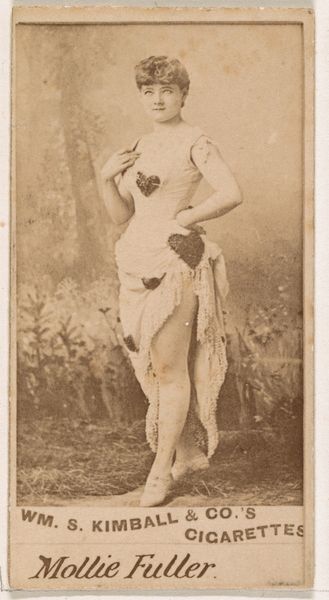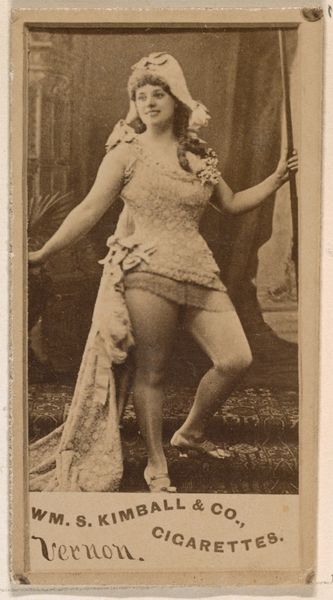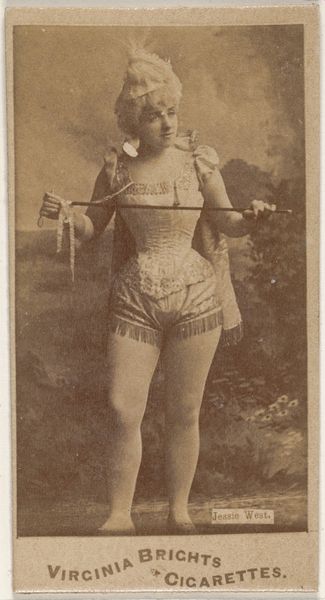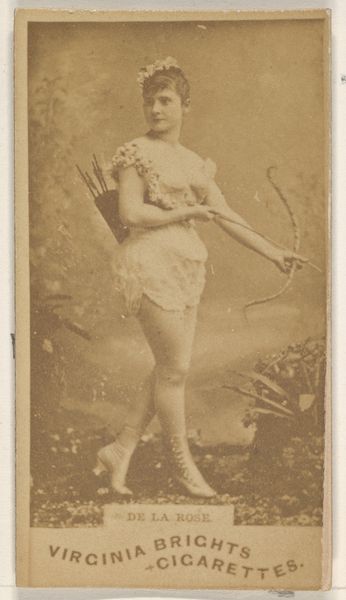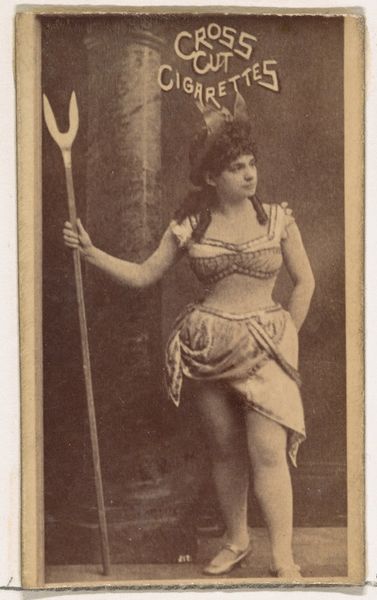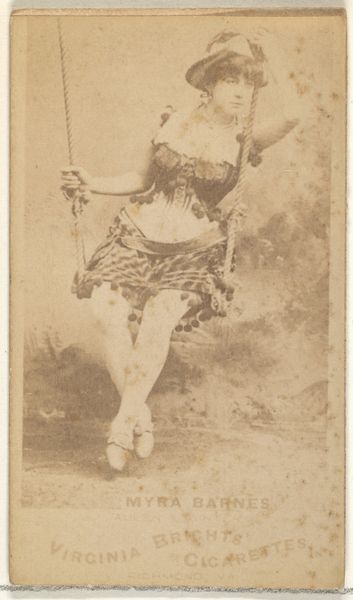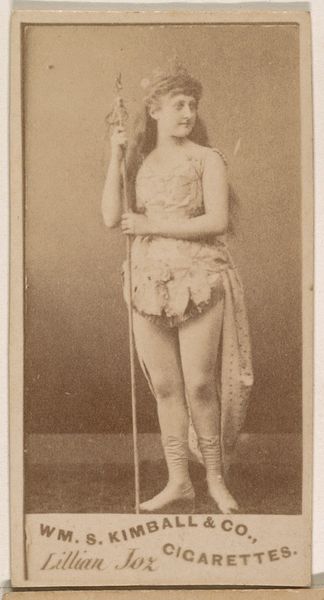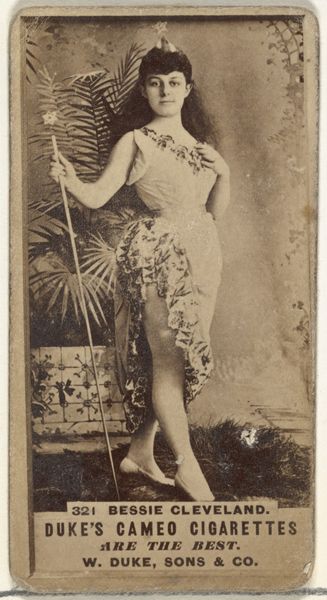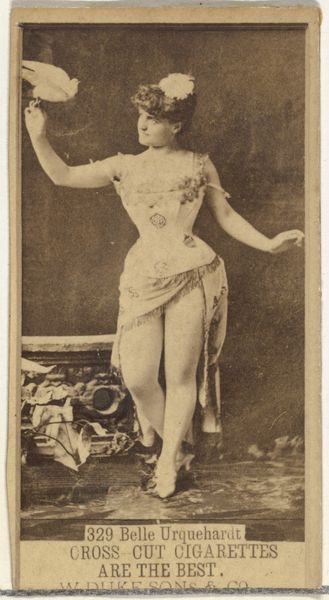
Kittie Fizeltine, from the Actresses series (N203) issued by Wm. S. Kimball & Co. 1889
0:00
0:00
drawing, print, photography
#
portrait
#
drawing
# print
#
photography
Dimensions: Sheet: 2 5/8 × 1 3/8 in. (6.6 × 3.5 cm)
Copyright: Public Domain
Curator: This is a trading card dating back to 1889, produced by Wm. S. Kimball & Co., as part of their Actresses series. This particular one features a woman named Kittie Fizeltine. It blends photography and print techniques, capturing a popular actress of the time. Editor: There's a captivating allure to this image, with its sepia tones and the actress's poised stance. She looks powerful yet playful, in what almost seems a caricature of Greco-Roman clothing, fringed at the bottom. Curator: Indeed, these cards were essentially marketing tools. Kimball, a major tobacco company, included them in cigarette packs. It reveals much about the period’s attitudes toward advertising, celebrity culture, and the commodification of the female image. Editor: Absolutely. Think about the implications of linking this woman’s image with cigarettes! It speaks volumes about the persuasive, almost manipulative strategies companies would deploy to create associations between pleasure, aspiration, and consumption. She seems confident, her gaze inviting, perhaps selling an illusion as much as she’s selling cigarettes. Curator: The setting is quite artificial, almost dreamlike. This was likely a constructed studio environment. Actresses became a fascination, public figures manufactured for admiration and aspiration. The "Actresses" series put these women into the hands of a broad public, fostering a sort of parasocial relationship. Editor: The tension between her constructed image and the reality of her life must have been enormous. Placed atop the cigarette pack as if to seduce. Was she paid fairly? Did she have any control over the usage of her image? This one photograph, one cigarette card, sparks essential questions of exploitation within capitalism. Curator: Those are vital questions. These objects were not viewed as "high art," of course. The aim was pure publicity. We see these trading cards in the Met as social artifacts, mirroring their time’s aesthetics and consumer culture. They also raise profound questions about labor. Editor: I concur. When we center intersectional ideas of gender, commerce, and spectatorship, this cigarette card, this photograph becomes much more than simple memorabilia. This small portrait is a portal to so much history. Curator: It reminds us to look beneath the surface, past the glamour, to see how cultural power functions. Editor: Exactly. Even something as ephemeral as a cigarette card can open up a much wider world of context and reflection.
Comments
No comments
Be the first to comment and join the conversation on the ultimate creative platform.
